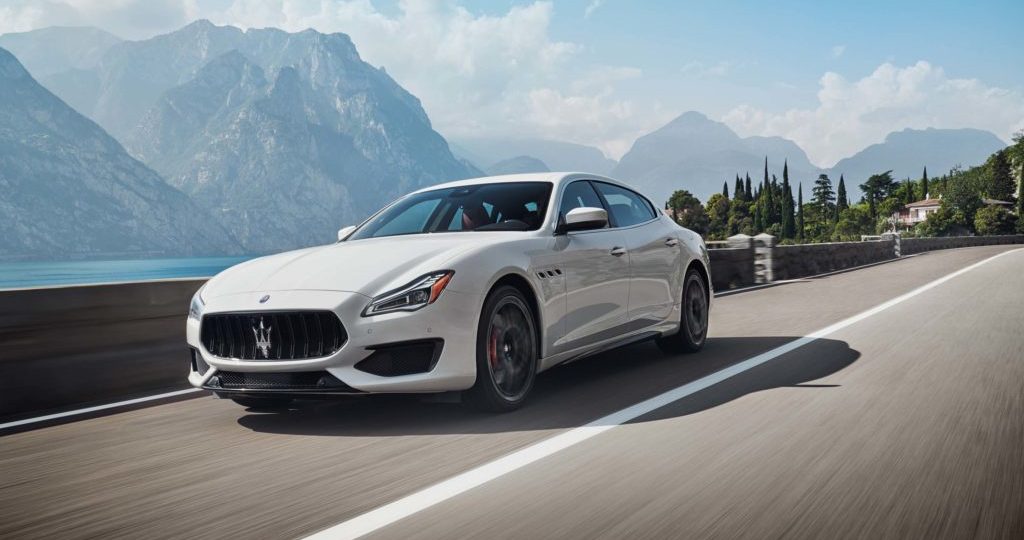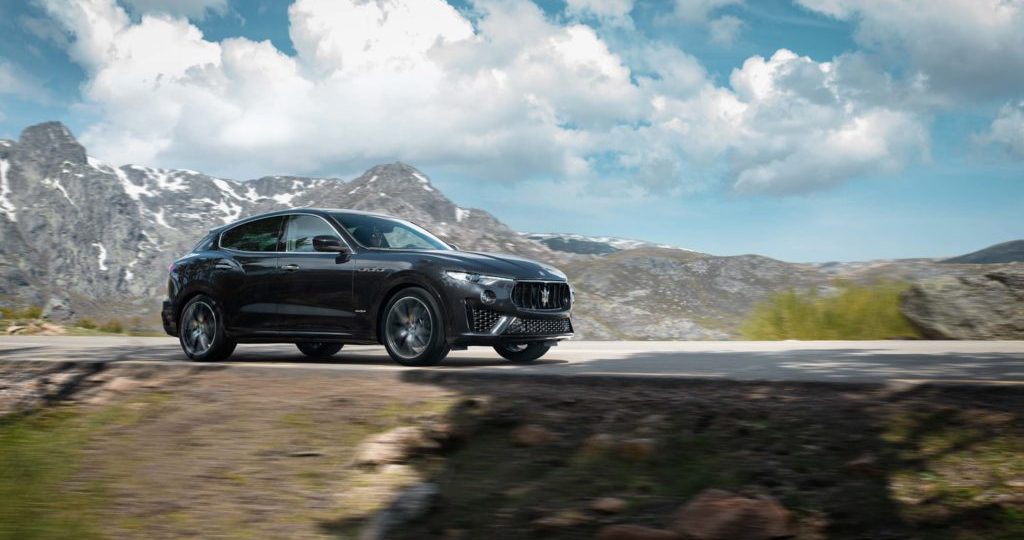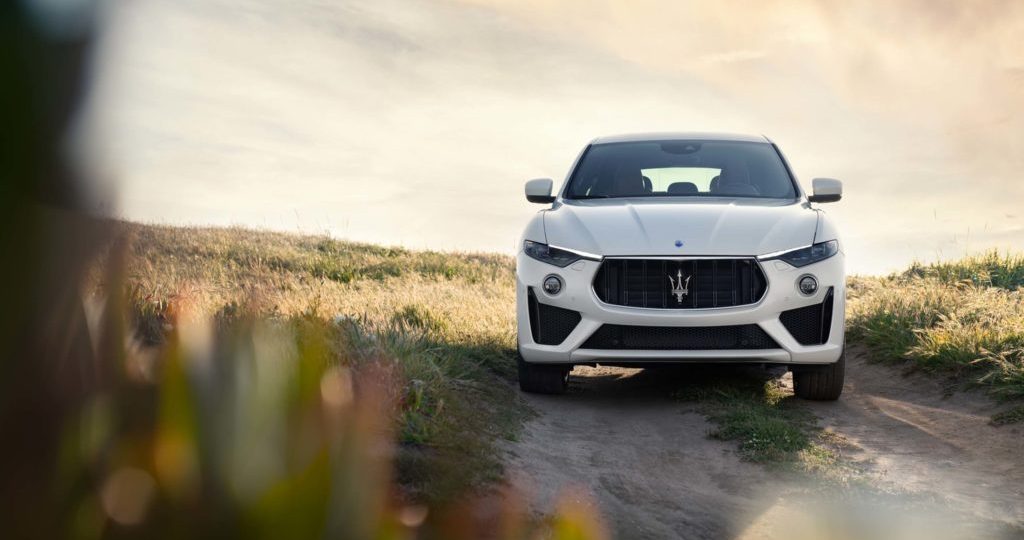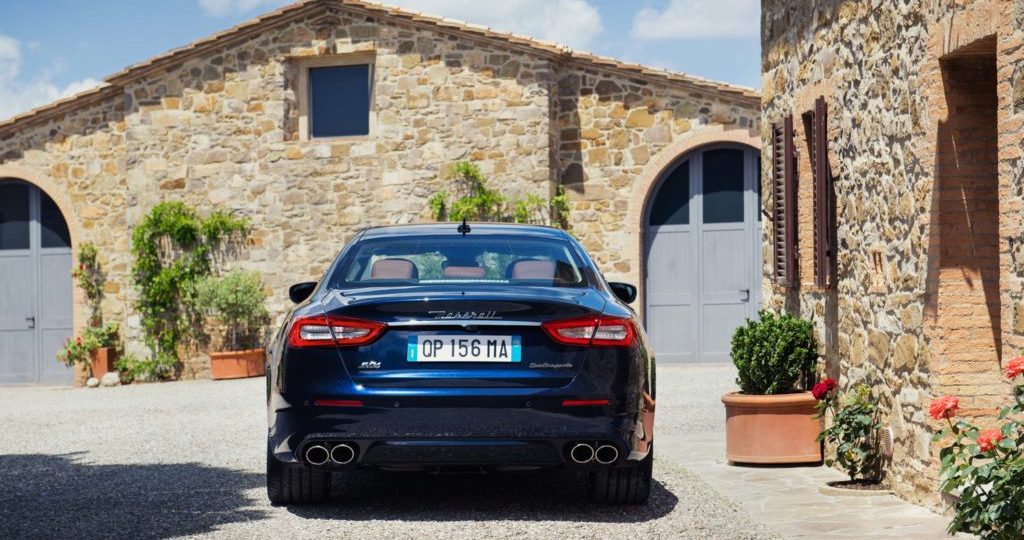DRIVE AND SAIL


The Gran Lusso Ghibli
For the first of our drives, we met up with the Maserati team at the Le Mas Candille Hotel on the outskirts of Cannes. Our transport for the day was the Ghibli, in its Gran Lusso designation: a subtle and luxury-oriented model, compared to the more aggressive Ghibli Gran Sport. Both feature the 350bhp, 3.0-litre twin turbo V6 engine, but for our planned drive down to Antibes what we’re really interested in is how the luxury saloon can cope with a number of tight Riviera roads. Sitting in the supportive Peino Fiore 12-way power leather seats, the blue dials, analogue clock and the large trident in the chunky sport steering wheel remind you of exactly what you’re piloting. The Ghibli entered the premium segment in 2013 boasting tangibly superior cabin craftsmanship and it’s evolved nicely in the interim. Now, we have a 8.4” Maserati Touch Control Plus display with a 7” TFT display nestled in between the tach and speedo. There’s a redesigned gearshift lever and a revised button cluster for the driving modes; and one option that made us smile was the ‘American size’ cup holders – perfect for those ‘Big Gulps’. This is a Maserati, however, so even in our Gran Lusso, the driving position is low and purposeful and as we inch out on to some narrow roads, the long, sweeping bonnet shortens visibly, leaving you confident to squeeze between a pair of Fiat Pandas.
At relaxed speeds, the V6 is totally docile; you just accelerate, brake and point the steering wheel where you want to go. There’s no engine or exhaust noise at low revs, which allows you to just enjoy the experience.
Winding our way down towards Antibes, we are in no real rush, but it would be rude not to up the tempo a little bit and see how the Ferrari-manufactured twin turbo performs. A quiet stretch of winding road becomes our testing ground, and as we switch to Sport mode, the exhaust valves open up (they’re closed up to 3000rpm in Normal mode) and the Ghibli’s voice turns from Barry White to Axl Rose. The V6 roars with a tone only the Italians appear to be able to perfect, making driving with the windows down a necessity. It’s a glorious sound and one that’s backed up with seat-of-the-pants performance. Don’t be fooled by the four-door layout, the Ghibli, is an all out sports car in a gran turismo body. Floor the throttle and you’re launched forward with the four-wheel drive system and Limited-Slip Differential putting the power on smoothly and efficiently. As we let it cool down on the run into Antibes, we’ve already bonded with the Ghibli, but now it’s time for the Quattroporte.


Four-door luxury
With our Ghibli parked next to the Quattroporte, our first observation is how similar they are style wise. Both have four doors, a long bonnet ending in a shark-like grille, and even the rears are similar with four exhausts and clear lenses with red surrounds. However, the super luxury Quattroporte is wider and significantly longer, with the big four door sneaking an extra side window into its silhouette. Official figures have the Ghibli at 4,971mm in length with a wheelbase of 2,998mm and the Quattroporte at 5,262mm with a 3,171mm wheelbase. That’s almost a foot longer and with it a considerable increase in rear seat room.
The Quattroporte looks and feels the size it is. Imposing to onlookers and luxuriously spacious for its inhabitants, who are perhaps more likely to get driven in the big four door, than to be actually driving it. Engine options include the twin turbo V6, but Middle East buyers will be relieved to find it’s also available with a 530bhp twin turbo V8. We again drove the V6 (we’ll be testing the V8 on home turf in an upcoming issue) and performance is still brisk, but we’d prefer to order our Quattroporte in GranLusso trim over the GranSport and just waft about enjoying the extra space of the big four door.
“Winding our way down towards Antibes, we are in no real rush, but it would be rude not to up the tempo a bit and see how the Ferrari-manufactured twin turbo performs.”
New family member
Moving back down the size scale, we are now introduced to our five door, five person Levante. This is of particular interest, as I’ve never driven it before. The now familiar twin turbo V6 was powering us, but within seconds of setting off the experience was totally different to either the Ghibli or the Quattroporte.
The inside view from the driver’s seat is similar, with the 8.4” Maserati Touch Control Plus display, premium materials plus the redesigned switchgear. It’s the same Maserati experience, just higher up. Looking out over the bonnet, the Levante feels twice as high as the Ghibli, with the elevated driving position giving you a commanding view, that ultimately made driving around the tight roads of the Alpes Maritimes easier, smoother and safer. Being able to see over and around the cars in front allowed us to push harder, resulting in a faster overall drive than the four doors.
And yes, the Levante really goes, with the benchmark 0-100km/h sprint dispatched in 5.2 seconds with a 264km/h top speed. What maybe differentiates the Levante from other premium SUVs is the sound. An ‘emergency start’ results in instant acceleration, combined with a banshee like howl that will send tingles down the spine of any petrol head. It’s addictive and will not help you achieve the stated fuel efficiency of 11.8 l/100km. Although we stayed firmly on road, the Levante can venture into the rough without any problems. There is plenty of torque, an intelligent four-wheel drive system and a selectable off-road mode, which increases the ride height by 25mm. The Levante’s a genuine all-rounder, and fits the gap in the Maserati range for a family friendly, fun and rather swift SUV. It slides snugly between the sporty Ghibli and the bigger super luxury Quattroporte, offering a completely new and unique entry into Maserati ownership; practicality, functionality and the ability to venture off road.













